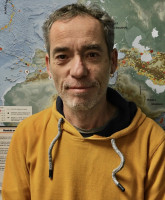Natural Catastrophes
Earthquakes & Seismic Hazards
Post-Doctoral Fellowships
Singapore
2017.12.31
Towards better seismic hazard resilience in Southwest China
Exploring the past to prepare for the future
The first step of Dr. Xuhua Shi’s project is thus to use state-of-the-art technology to precisely map the 350 km-long fault, and to provide a high-resolution fault location map. « Then, I aim to use the maps and the high-resolution digital elevation models to determine spatial distribution of co-seismic slips of historic earthquakes along the fault », he specifies. « This will give us insight into the behaviour of the fault in case of an earthquake, whether it differs from one earthquake to another, or stays substantially the same ». Once the first step is completed, Dr. Xuhua Shi and his team will be able to identity key sites to conduct field studies. Using radiocarbon dating of sediments, the second objective will be to investigate the recurrence characteristics and rupture behaviours of large historic earthquakes.
Mitigating the impact of future earthquakes along the Xiaojiang fault has extremely high stakes. Its geographic position, in the mountainous area connecting China to Myanmar, Thailand, Lao and Vietnam, places it in a strategically important area for Chinese economical development. Furthermore, the combination of rugged terrain and dense populations urgently calls for a modern evaluation of seismic hazard. By providing decision-makers with a solid basis to assess seismic hazard in the southwestern region of China, Dr. Xuhua Shi’s project will fill a critical gap and contribute greatly to hazard resilience.

Xuhua
SHI
Institution
Nanyang Technological University
Earth Observatory of Singapore (EOS)
Country
Singapore
Nationality
Chinese
Related articles
Natural Catastrophes
Climate Change
Wildfires
Climate Adaptation & Resilience
Global Warming
AXA Chair
Greece
AXA Chair in Wildfires and Climate
The consequences of climate change have never been as substantial and visible in such a wide range of places around ... Read more

Apostolos
VOULGARAKIS
Technical University of Crete
Natural Catastrophes
Volcanic Eruption
Joint Research Initiative
United Kingdom
2018.12.31
Volcanic Risk Assessment in Asia
Assessing volcanic ash hazard footprints in Asia In the language of insurance, a large volcanic ash plume represents what is... Read more

Susanna
JENKINS
